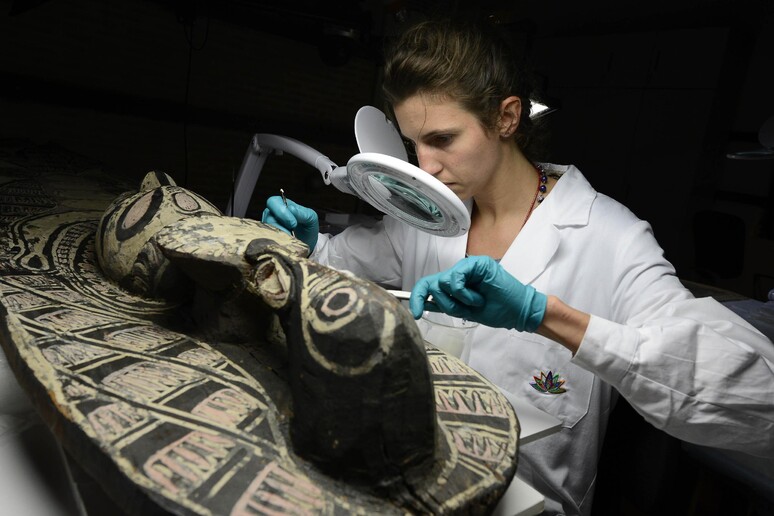A new book out this week gives a rare insight into the Vatican Museums, which house the world-famous Sistine Chapel among their countless artistic treasures.
Titled 'The Vatican Museums - Art, History, Curiosities', the book by curator and art critic Sandro Barbagallo recounts little-known anecdotes and features previously unpublished photos of the Vatican's priceless art collection of paintings, sculptures, tapestries and more.
Founded by Pope Julius II in the early 16th century and enlarged by successive pontiffs, the Vatican Museums are housed in the lavishly decorated halls and galleries of the Palazzo Apostolico Vaticano, a vast 5.5-hectare complex made up of two palaces - the Vatican Palace and the Belvedere Palace - joined by two long galleries. Barbagallo's book takes an in-depth look at the Vatican Museums restoration lab, which is located under the four Raphael Rooms and was opened to the public on an exceptional basis for Wednesday night's book launch.
This is where the works on display in the Museums' seven-kilometer galleries - which are visited by six million people every year - as well as masterpieces housed in the Vatican's other palaces, churches and embassies come to get repaired or refurbished.
The restoration lab founded in 1923 employs 60 people and relies on dozens of expert consultants working for six different museum departments: paintings, marbles, paper, ceramics and metals, tapestries, and mixed media.
"We have to be careful, because restorers themselves are the number one danger for the artwork," said marble department chief restorer Guy Devreux. "We're fortunate to have all the most cutting edge technology at our disposal - from diagnostics to nanotechnology to the latest-generation materials," he explained.
However, said Devreux, the Vatican restoration lab prefers to use natural substances - such as essential oils and non-toxic materials - that respect the environment and mankind.
ALL RIGHTS RESERVED © Copyright ANSA











